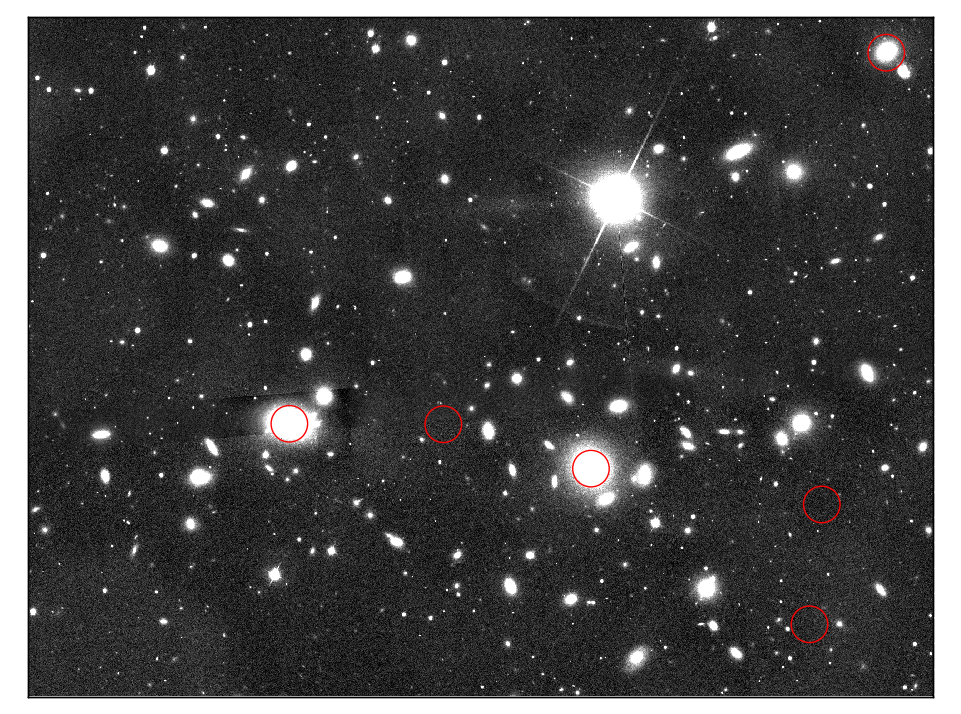Coma Cluster
Contact

| Charlie Conroy |
|---|
| Harvard University |
| cconroy@cfa.harvard.edu |
Summary
This program is designed to obtain very deep (~ 19 hr) exposures of the Coma cluster and surrounding environment for a variety of purposes. It includes deep, high-quality spectra of the two cD galaxies in Coma, ordinary elliptical galaxies, dwarf elliptical galaxies, ultrafaint dwarfs, and regions of diffuse intracluster light.
Finding Targets
An object whose MANGA_TARGET3 or MNGTARG3 value includes one or more of the bitmasks in the following table was targeted for spectroscopy as part of this ancillary target program. See SDSS bitmasks to learn how to use these values to identify objects in this ancillary target program.
| Program (bit name) | Bit number | Target Description |
|---|---|---|
| DEEP_COMA | 19 | Coma cluster targets |
Description
These plates target the Coma cluster and the surrounding field, including the two cD galaxies NGC 4889 and NGC 4874 and a variety of other targets. The scientific purpose of the observations is to obtain very high quality spectra to enable detailed stellar population analysis of the bright galaxies over a large radial extent, make novel measurements of the stellar populations in ultrafaint dwarf galaxies and diffuse intracluster regions, and to test the limits of the MaNGA data reduction pipeline at low light levels. Given these ambitious objectives, these plates have been observed with non-standard instrumental configurations and an observing strategy different from the rest of the MaNGA survey.
Each plate observes the central massive cD galaxies (varying placement between the central regions and the galaxy outskirts), a selection of ordinary galaxies, 3 ultrafaint galaxies, and 3 regions of intracluster light (ICL) identified using the Dragonfly Telephoto Array instrument. Additionally, some IFUs are placed on regions of dark sky far from the cluster in order to improve the sky subtraction by increasing the number of fibers used to create the super sky model. The assignment of these targets to specific IFU bundles varies between plates, and sometimes between different pluggings of the same plate.
Additionally, the Coma program obtains nodded all-sky exposures interleaved with the science exposures in which the telescope field has been offset such that all IFUs point to blank regions of the sky. These nodded sky exposures provide additional control over low-level systematics otherwise present in the sky-subtracted data and are necessary to reach depths ~ 28 AB/arcsec2.
Given all of the oddities of the deep Coma data, numerous changes have been made to the MaNGA DRP in order to handle the differences in observing strategy (cueing off of keywords present in the exposure headers). Similarly, not all observations of Coma plates have been processed through the 3d DRP to produce data cubes; rather, scientific studies using these data are recommended to work with the intermediate 2d pipeline products (mgCFrame) instead. It is generally recommended to exclude Coma objects from standard analyses of the MaNGA sample since they contain objects such as ICL and sky pointings.


